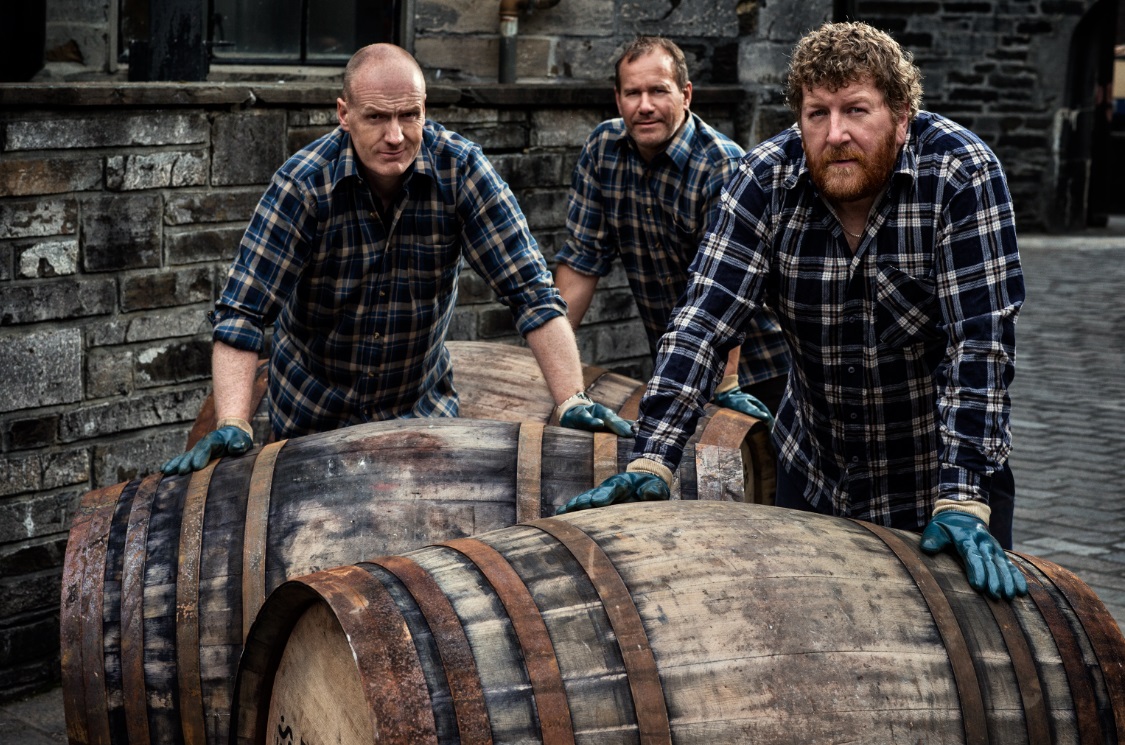
Scotch’s final frontier
Back to the mainland and on to Oban. From there, yet another ferry takes us to Mull and the Tobermory distillery, a venerable venture with a chequered history of on and off operations. As the name suggests, the distillery is in Tobermory, a pretty harbour-side town. The building dates back to 1798 and, though the only warehouse was converted years ago into apartments, distilling still takes place on the original site.
This is a relatively small and unheralded distillery, making around 750,000-850,000 litres annually, against a potential 1m litres, but apart from a modest amount used in the Black Bottle blend, all the production is reserved for single malts. There are two styles – the unpeated Tobermory and Ledaig, which uses Port Ellen malt peated to 39ppm of phenols.
Now owned by Burn Stewart Distillers, Tobermory has announced a two-year closure to refurbish the distillery, though supplies of Tobermory and Ledaig will remain available over that time. I would anticipate greater focus on the single malt brands once production resumes.
Back on the mainland, from where it is possible to drive over the sea to Skye on the controversial but very convenient 1995 Skye Bridge.
FARMHOUSE OPERATION
Currently, Skye is home to Diageo’s mighty Talisker and the long-awaited but tiny Torabhaig Distillery. This £5m project from Mossburn Distillers will eventually make around 500,000 litres from a traditional farmhouse operation in an old farm steading. However, no releases are expected for at least five years as the project is fully funded until mature whisky is available.
But the major distillery on Skye is, of course, Talisker, somewhat to the north of Torabhaig. Once, unusually for scotch, triple-distilled, today the distillery runs along quite traditional lines. It still uses wooden worm tubs and a high degree of reflux from the stills. Also traditionally, and commendably, Talisker is bottled at the higher strength of 45.8%.
Of the various releases I’d recommend the ‘standard’ 10-year-old as an introduction to Talisker, then you can move on to the 18-year-old, the non-aged Storm variant, one of the many limited releases or the excellent Port Ruighe, finished in a port wine cask.
Just off Skye on the tiny island of Raasay, construction of a new distillery for R&B Distillers is well advanced and spirit is expected to run shortly. The Victorian Borodale House will then be restored and renovated to serve as the distillery visitors’ centre.
From the very north of Skye a four-hour ferry trip takes us to Harris and Lewis. Physically they are one land mass, actually the third largest in the UK after Great Britain and the island of Ireland, but always referred to as two separate islands. Please don’t ask me why.
There are now two distilleries operating here. Abhainn Dearg (pronounced Aveen Jarræk), or Red River in English, is in Uig on Lewis. The tiny distillery was founded by Mark Tayburn, whose vision led to the first legal whisky distillery in the Outer Hebrides in almost 200 years.
Established in 2008, the first spirit to leave the island was in 2010 when two small casks of new spirit were sold to Germany and in the UK. The first Abhainn Dearg Single Malt was released in 2011, a three-year-old special release. However, no further bottling will be available until 2018 when the first spirit laid down will be a mature 10-year-old single malt whisky.
